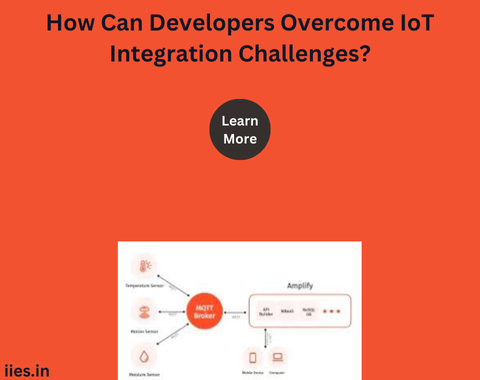
The Internet of Things (IoT) has revolutionized the way we interact with technology, connecting devices, sensors, and systems in ways previously unimaginable. However, IoT integration poses significant challenges that developers must overcome to create reliable, secure, and efficient systems. In this article, we’ll explore these challenges and provide strategies to help developers successfully integrate IoT solutions.
One of the most significant challenges in IoT integration is the lack of standardized protocols. Devices from different manufacturers often use varying communication protocols, making seamless integration difficult. For instance, some devices may use MQTT, while others rely on HTTP, CoAP, or proprietary protocols.
Solution: Developers can address this issue by adopting middleware platforms that support multiple protocols. Middleware acts as a translator between different devices, allowing them to communicate effectively. Additionally, focusing on industry-recognized standards like MQTT and CoAP can reduce compatibility issues.
IoT devices generate vast amounts of data, which can be overwhelming to manage and analyze. As the number of connected devices grows, the need for scalable data storage and processing solutions becomes critical.
Solution: To handle the data deluge, developers should leverage cloud computing and edge computing. Cloud platforms provide scalable storage and processing power, while edge computing allows data to be processed closer to the source, reducing latency and bandwidth usage. Implementing efficient data compression and filtering techniques can also help manage data flow.
Security is a paramount concern in embedded systems, as the interconnected nature of devices creates multiple entry points for potential cyberattacks. A single vulnerable device can compromise an entire network, leading to data breaches and unauthorized access.
Solution: Developers must prioritize security at every level of IoT integration. This includes implementing strong encryption protocols, regularly updating firmware, and ensuring secure authentication methods. Network segmentation can also limit the impact of a breached device by isolating it from the rest of the system.
With a multitude of devices, operating systems, and platforms involved in IoT ecosystems, achieving interoperability can be challenging. Devices may struggle to communicate or work together if they operate on different platforms or use incompatible software.
Solution: Emphasizing open standards and APIs can enhance interoperability. Developers should design their systems to be as platform-agnostic as possible, ensuring that devices can communicate across different environments. Collaboration with industry consortiums working on IoT standards can also guide the development of more interoperable solutions.
IoT devices, particularly those in remote or inaccessible locations, often have limited power sources. Ensuring that these devices operate efficiently without draining their batteries too quickly is crucial.
Solution: Developers can optimize energy efficiency by using low-power communication protocols like Zigbee or LoRaWAN. Additionally, employing energy-efficient hardware components and implementing power-saving modes in software can extend the operational life of IoT devices. Edge computing can also play a role by processing data locally, reducing the need for energy-intensive data transmission.
IoT integration often involves combining legacy systems with new technology, which can be a complex and time-consuming process. Legacy systems may not be designed to handle the volume or variety of data generated by IoT devices, leading to compatibility issues.
Solution: A phased integration approach can ease the transition from legacy to IoT systems. Developers should start with pilot projects to test integration strategies and address potential issues before full-scale implementation. Using integration platforms that bridge the gap between legacy systems and IoT technologies can also simplify the process.
As IoT systems become more complex, ensuring a seamless user experience (UX) is essential. Users may struggle with configuring and managing multiple devices, leading to frustration and reduced adoption rates.
Solution: Developers should prioritize intuitive UX design, making it easy for users to interact with IoT systems. This includes creating user-friendly interfaces, simplifying device pairing processes, and providing clear documentation and support. Regular user testing can help identify pain points and improve the overall experience.
IoT systems must comply with various regulations, particularly concerning data privacy and security. Navigating these regulations can be challenging, especially when deploying IoT solutions across different regions with varying legal requirements.
Solution: Developers need to stay informed about relevant regulations and incorporate compliance into their development process from the outset. Working with legal experts and adhering to industry standards like GDPR for data protection can help ensure that IoT systems meet regulatory requirements.
While IoT integration presents numerous challenges, developers can overcome these obstacles by adopting strategic approaches. By focusing on interoperability, security, scalability, and user experience, developers can create robust IoT solutions that meet the demands of a connected world. As the IoT landscape continues to evolve, staying adaptable and informed will be key to successfully navigating the complexities of IoT integration.
Indian Institute of Embedded Systems – IIES